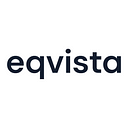Adapting to Change: The What and Why Behind the Rise of SaaS Marketplaces
As of now, companies indicate that they will transition a substantial 80 percent of their applications to the cloud by year-end, and they anticipate significant growth in these figures in the coming years, with 73 percent committing to the transition. The increasing demand for cloud-based solutions drives their ability to facilitate remote work, telemedicine, and other essential services.
Many businesses use SaaS applications, which often share resources among multiple users through a multi-tenant structure. These applications are popular in various areas, like customer relationship management (CRM) and collaboration tools. They offer businesses cost-effective and adaptable solutions. Let’s discuss the Saas marketplace, why Saas? And the challenges to overcome.
What is Saas Marketplace?
A Software as a Service (SaaS) marketplace is a platform that brings together various cloud-based software applications, allowing users to discover, purchase, and integrate these applications into their existing systems. These marketplaces simplify finding and using different software solutions by offering a centralized hub.
Example: Salesforce AppExchange. Salesforce is a customer relationship management (CRM) platform, and the AppExchange is its marketplace. On AppExchange, users can find various third-party applications and integrations that complement Salesforce’s core functionalities. These apps cover diverse business needs like marketing, analytics, and project management. Users can easily explore, install, and integrate these apps directly into their Salesforce environment, using the platform’s capabilities according to their specific requirements.
When does it all start?
The growth of SaaS marketplaces has been a changing and transformative journey shaped by technological advancements, changing business needs, and market trends. Let’s take a look at the important stages in the development of SaaS marketplaces:
Early SaaS (2000s) — Companies like Salesforce started providing software over the internet, a shift from traditional models. Diversification (Mid-2000s to Early 2010s)- SaaS expanded to cover various business functions like HR and finance. Specialized solutions tailored to specific industries emerged. SaaS Marketplaces (The mid-2010s) — Platforms like Salesforce and Microsoft introduced app marketplaces.
Users could easily use third-party apps with their core SaaS solutions. Integration Push (Late 2010s) — Businesses focused on smooth integration between SaaS tools using API (Application Programming Interface). SaaS marketplaces evolved into ecosystems, connecting different software solutions.
Service Expansion (Late 2010s to Early 2020s) — SaaS marketplaces broadened to include services like consulting and training. Subscription models became more flexible for users to customize their software stacks. AI and Automation Focus (Late 2010s to Present) — SaaS applications integrated AI and automation for enhanced functionality. Marketplaces featured AI-driven tools for analytics and automation.
Enterprise App Stores (Present) — Large companies created their app stores, combining approved SaaS apps and custom solutions for employees.
What are the advantages of Saas Marketplace?
A SaaS company will benefit by showcasing its product in the SaaS MarketPlace in the following ways:
Scalability
Scalability is crucial for the success of any business, especially in SaaS-based B2B platforms. It refers to the platform’s ability to handle growing demands without sacrificing performance or functionality. Through strategies like
- Infrastructure scaling,
- Elasticity scaling
- Horizontal scaling, and
- Database scaling,
SaaS-based B2B platforms can effectively manage increased user demand, data volume, and integration needs while maintaining high performance and availability.
Salesforce, Zendesk, and Dropbox are renowned for their robust scalability features. By adopting scalable SaaS-based B2B platforms, businesses can confidently expand their operations and customer base without significant infrastructure investments or disruptions.
Flexibility
SaaS-based B2B marketplaces offer significant flexibility, allowing businesses to customize and integrate various software solutions to meet their needs. They can offer scalable pricing options, support various business activities, and accommodate the unique requirements of different companies. Platforms like
- Shopify,
- Slack, and
- Salesforce
provide high flexibility, enabling businesses to adapt to changing market conditions and capitalize on new opportunities.
Time and Cost Efficiency
SaaS-based B2B platforms offer time and cost efficiency by eliminating the need for in-house software development and maintenance. They require minimal upkeep, allowing businesses to allocate resources to other areas. With
- Affordable subscription plans,
- Scalability for business growth and
- Lower development costs compared to traditional software licenses,
SaaS-based B2B platforms provide a cost-effective digital commerce experience. As businesses prioritize efficiency and cost reduction, the adoption of SaaS-based B2B platforms continues to rise. Also, there are
- Diverse Application Ecosystem — The SaaS marketplace provides access to various applications like inventory management, CRM, and analytics tools.
- Integration Capabilities — SaaS applications smoothly integrate with existing systems, enabling smooth data flow between the e-commerce platform, CRM, and inventory management tools.
- Centralized Management — All subscribed applications are managed from a centralized dashboard within the SaaS marketplace, simplifying administration and ensuring efficient oversight.
- Reduced IT Overhead — SaaS marketplace providers handle maintenance, updates, and security of subscribed applications, reducing the workload on the IT department and allowing them to focus on strategic initiatives.
Why choose Eqvista for SaaS company valuation?
Many SaaS companies participate in SaaS marketplaces to make their software applications more accessible to a broader audience. To do that, the valuation of the company is important. SaaS valuation multiples (compared with other businesses), sale options, and exit strategy contribute to obtaining it. It is best to involve a professional broker to calculate the accurate value of the company’s worth.
If you are a Saas company looking to participate in the Saas marketplace, a good broker can assist you in calculating and determining your company’s value. One such convenient tool is Eqvista. Eqvista is software that provides all the necessary tools to evaluate a business, create a cap table, and manage shares. Contact us to know more!
